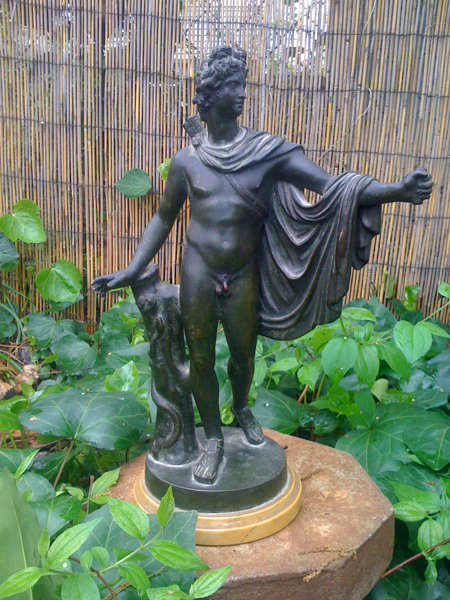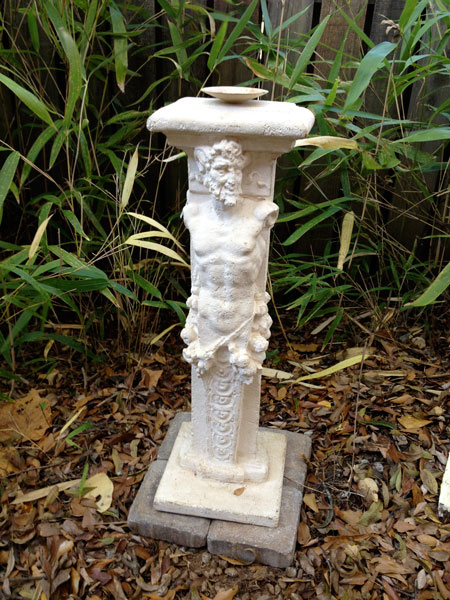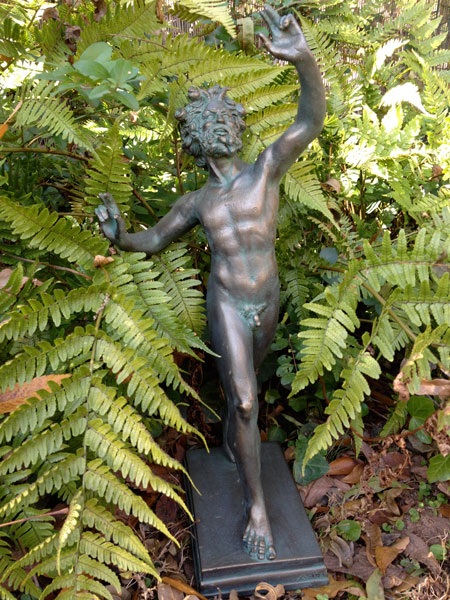I haven’t written about the labyrinth in a while. It’s still there, and I still get out there for meditation and work, but not as much as I’d like.
Here’s a shot from today:

The grass is going dormant, although the clover is still green. Before tomorrow night I’ll need to get out and run the mower over it all to mulch the leaves. Some Lichtenbergians are coming over to discuss The Ego and the Dynamic Ground, a book about transpersonal psychology. I’ve been reading it back and forth on the train to the office, and it is utterly fascinating. Another post, or series of posts. All I will say at this point is that it reflects exactly my experience in the labyrinth.
There are a couple of additions to the place. You may recall the Apollo Belvedere:

Apollo, of course, was the Greek/Roman god of the sun, but also of medicine, music, and rationality, among other things. He stood for the creative aspect, the putting together of things, the holding together.
Opposed to all of that was Dionysus, the god of wine, libido, and dissolution. Dionysus (and his analogs of Pan and Shiva) stood for the destructive process, the taking apart, the letting go.
It does not take a Nietsche to realize that a wise person accommodates both these forces in his life and brings them into balance and alignment. Easy to say, not so easy to do, of course. But I’m working on it.
Anyway, I’ve been looking for a statue for the labyrinth, but the one I really wanted (the Barberini Faun) was only available in nearly lifesized copies costing $10,000. That much dissolution I did not need.
As an interim, I found this at Decor Encore downtown:

A charming little satyr plinth candle holder. It’s actually double-sided, and I have it up in the bamboo in the driveway to light your path downwards. No, that was not a metaphor.
My big find, however, is the Dancing Faun:

Isn’t he beautiful? As much as the totally oblivious dissolution of the Barberini appealed to me, this faun (the original is from Pompeii) is in a state to which I aspire: ecstatic abandon. The photo does not do it justice; no photo can. The piece is meant to be seen from all angles, and it changes depending on where you stand. (Yes, he has a tail, right above his taut runner’s buttocks.) This angle gives a better idea of the extreme contrapposto, the Hellenistic Mannerism—if I may slam two periods together—that motivates this work.
Next to him, Apollo looks kind of soft around the edges, doesn’t he? Balance, dear reader, balance.
One thought on “The labyrinth in autumn”